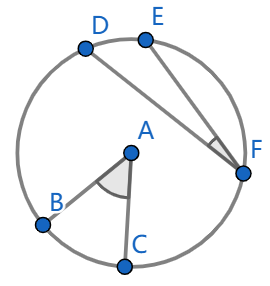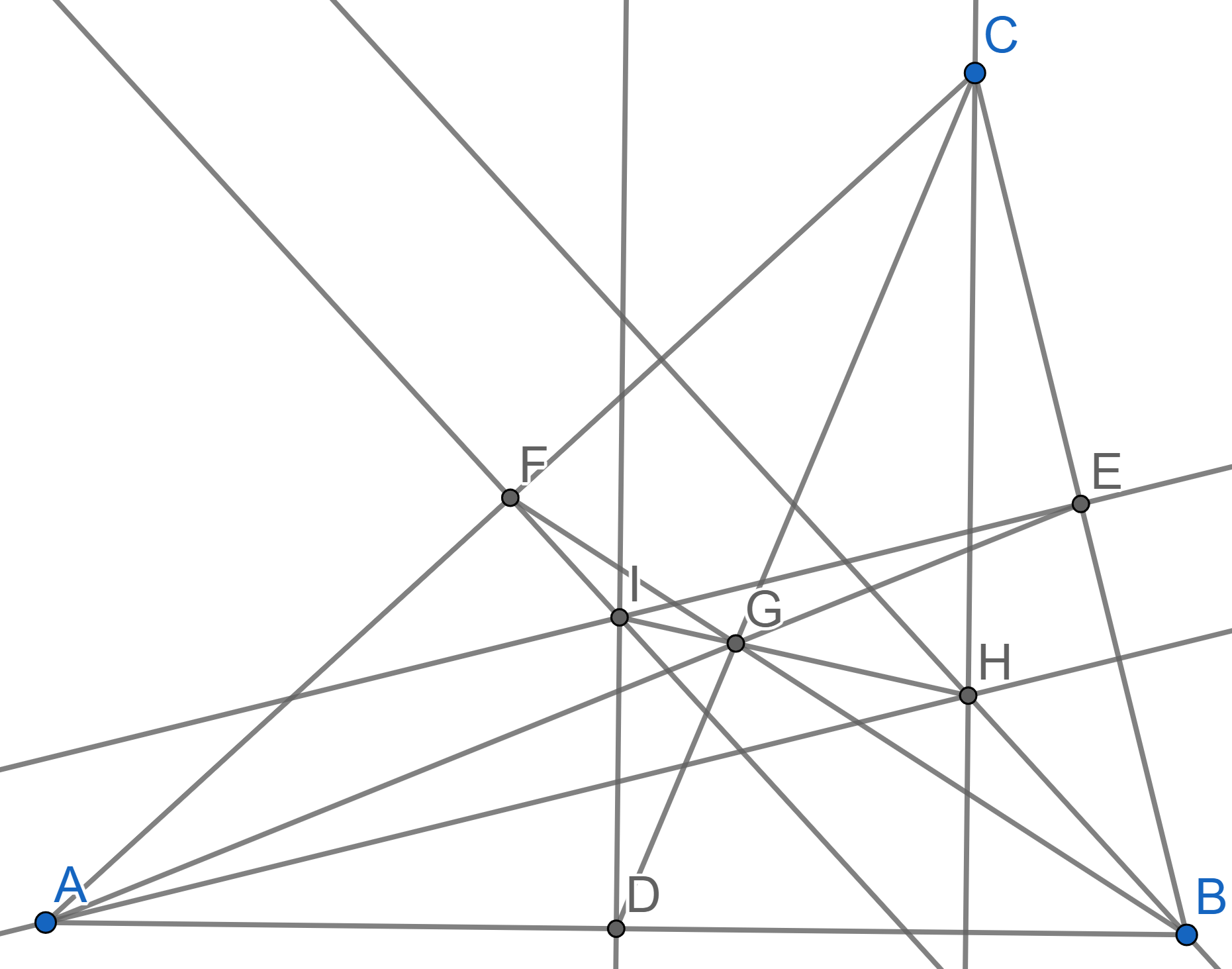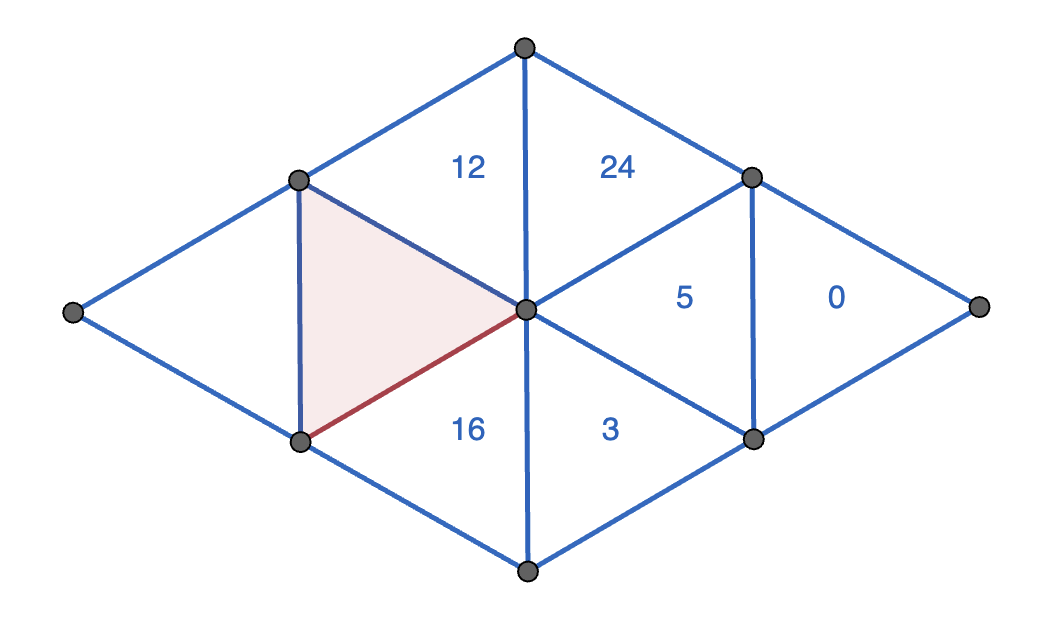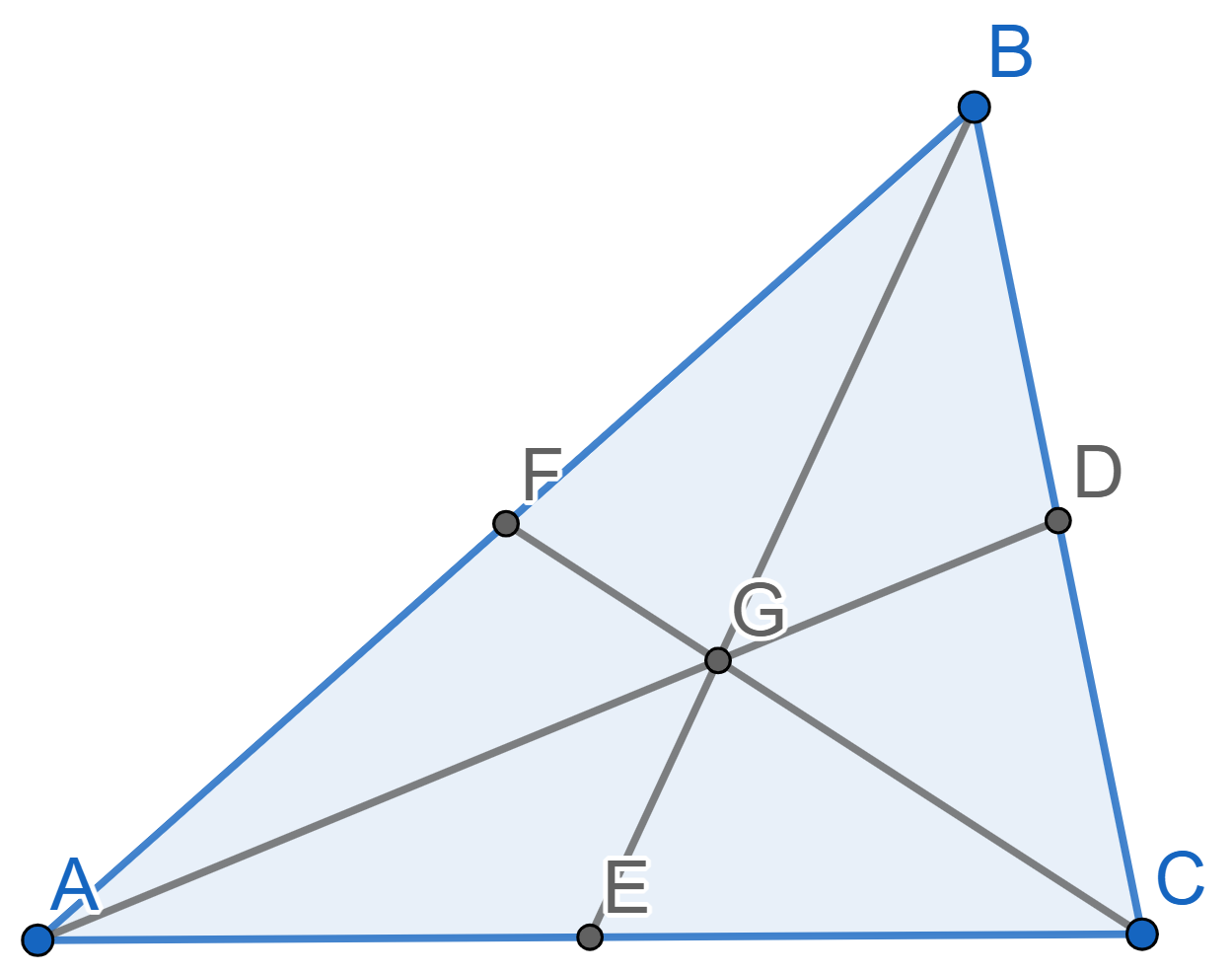Problems
Certain geometric objects nicely blend when they happen to be
together in a problem. One possible example of such a pair of objects is
a circle and an inscribed angle.
We will be using the following statements in the examples and
problems:
1. The supplementary angles (angles “hugging" a straight line) add up to
\(180^{\circ}\).
2. The sum of all internal angles of a triangle is also \(180^{\circ}\).

3. Two triangles are said to be “congruent" if ALL of their
corresponding sides and angles are equal.
The following terminology will also be quite helpful. In the picture
below, the points \(B\) and \(C\) lie on the circumference of the circle
while the vertex \(A\) lies at the
centre of the circle. We say that the angle \(\angle BAC\) is a central angle.
The angle \(\angle DFE\) is called an
inscribed angle because the vertices \(D\), \(F\)
and \(E\) all lie on the circumference
of the circle.

Prove that the product of five consecutive integers is divisible by \(120\).
Prove that the vertices of a planar graph can be coloured in (at most) six different colours such that every pair of vertices joined by an edge are of different colours.
Note: a graph is planar if it can be drawn in the plane with no edges
crossing. For example, three houses, each of which is connected to three
utilities, is not a planar graph.
You may find it useful to use the Euler characteristic: a planar graph
with \(v\) vertices, \(e\) edges and \(f\) faces satisfies \(v-e+f=2\).
Norman painted the plane using two colours: red and yellow. Both colours are used at least once. Show that no matter how Norman does this, there is a red point and a yellow point exactly \(1\)cm apart.
Two players are playing a game. The first player is thinking of a finite sequence of positive integers \(a_1\), \(a_2\), ..., \(a_n\). The second player can try to find the first player’s sequence by naming their own sequence \(b_1\), \(b_2\), ..., \(b_n\). After this, the first player will give the result \(a_1b_1 + a_2b_2 + ...+a_nb_n\). Then the second player can say another sequence \(c_1\), \(c_2\), ..., \(c_n\) to get another answer \(a_1c_1+ a_2c_2 + ... +a_nc_n\) from the first player. Find the smallest number of sequences the second player has to name to find out the sequence \(a_1\), \(a_2\), ..., \(a_n\).
The letters \(A\), \(R\), \(S\)
and \(T\) represent different digits
from \(1\) to \(9\). The same letters correspond to the
same digits, while different letters correspond to different
digits.
Find \(ART\), given that \(ARTS+STAR=10,T31\).
Let \(ABC\) be a non-isosceles
triangle. The point \(G\) is the point
of intersection of the medians \(AE\),
\(BF\), \(CD\). The point \(H\) is the point of intersection of all
heights. The point \(I\) is the center
of the circumscribed circle of \(ABC\),
or the point of intersection of all perpendicular bisectors to the
segments \(AB\), \(BC\), \(AC\).
Prove that points \(I,G,H\) lie on one
line and that the ratio \(IG:GH =
1:2\). The line that all of \(I\), \(G\)
and \(H\) lie on is called the
Euler line of triangle \(ABC\).

Paloma wrote digits from \(0\) to \(9\) in each of the \(9\) dots below, using each digit at most once. Since there are \(9\) dots and \(10\) digits, she must have missed one digit.
In the triangles, Paloma started writing either the three digits at the corners added together (the sum), or the three digits at the corners multiplied together (the product). She gave up before finishing the final two triangles.

What numbers could Paloma have written in the interior of the red triangle? Demonstrate that you’ve found all of the possibilities.
Let \(ABC\) be a triangle. Prove that the heights \(AD\), \(BE\), \(CF\) intersect in one point.

Let \(ABC\) be a triangle. Prove that the medians \(AD\), \(BE\), \(CF\) intersect in one point.
